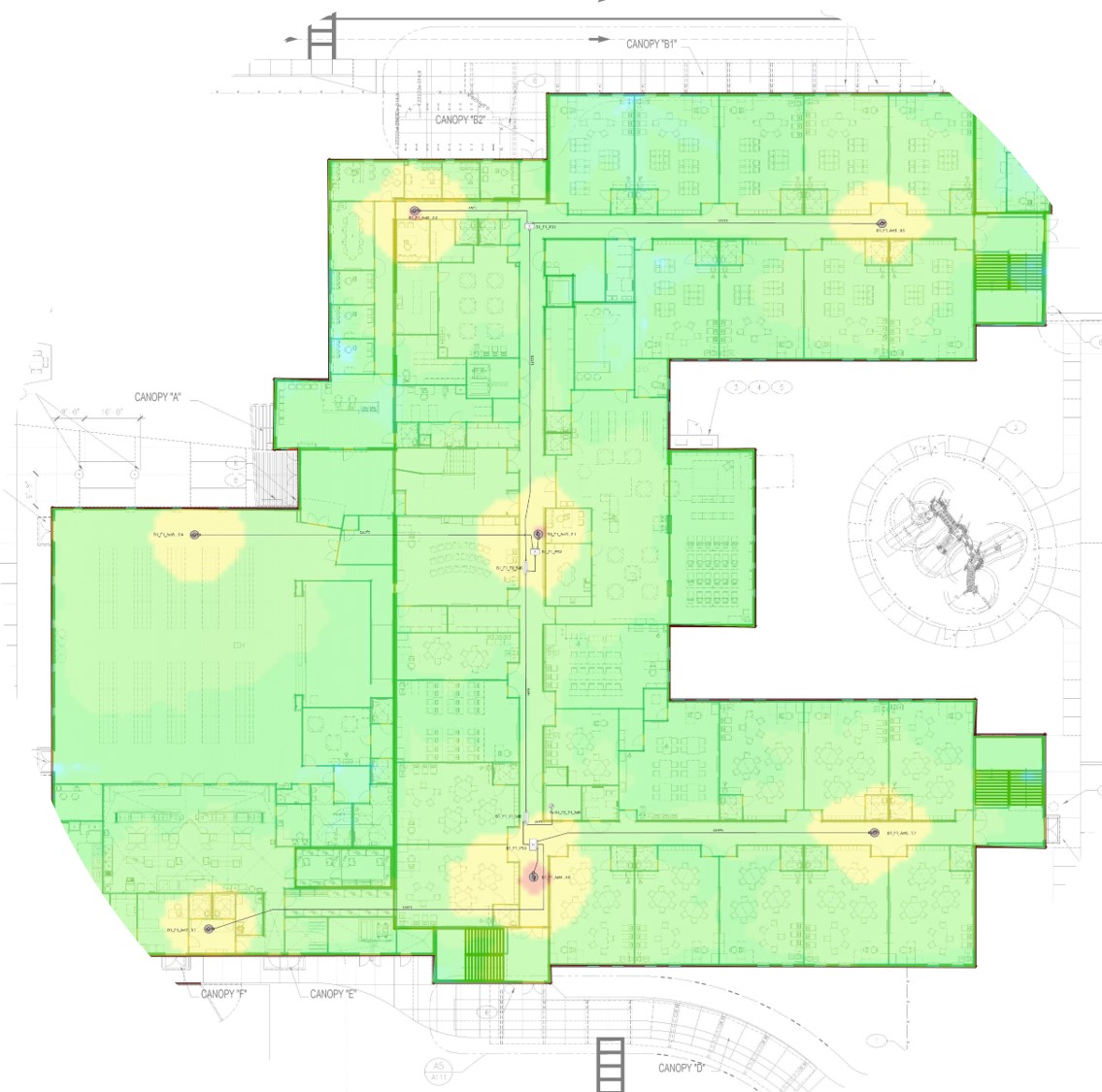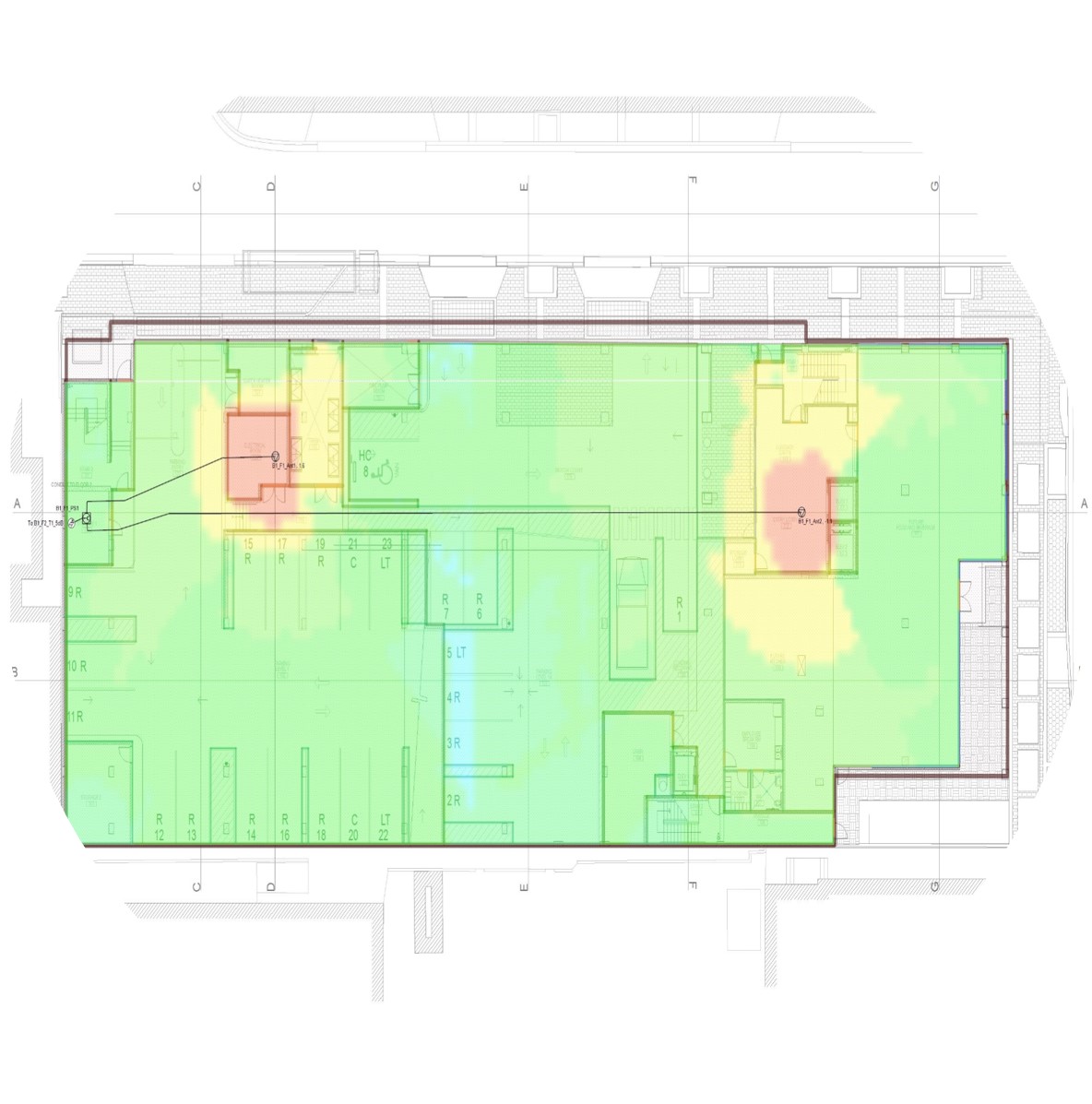Distributed Antenna System (DAS)
Jan 13, 2021


Photos:
(Left) Orange County Public Schools: Osborn Engineering worked with Orange County Public Schools (OCPS) to provide a Public Safety Radio Distributed Antenna System (DAS) for 14 elementary schools. The safety enhancements will strength signals for first responder communications and private radios used by school officials allowing for clearer communications in emergency situations.
(Right) Cambria Suites: Osborn Engineering designed the Distributed Antenna System (DAS) for the Cambria Suites 8-story 155-room hotel located in Downtown Orlando. The hotel includes a parking garage, ground floor restaurant, amenity deck, and rooftop lounge.
Written by: Grant Ramsay & Team
What Is DAS?
A Distributed Antenna System (DAS), is any system that receives, amplifies, and broadcasts a RF signal using multiple antenna locations throughout the building. DAS systems are used for a variety of signals; common examples are private radio, cellular, and public safety radio. These systems serve to increase indoor building coverage for cellular devices, emergency service radios, and private radios.
Generally, a DAS system receives a specific signal via an antenna mounted on the roof or side of the building, then passes the signal through an amplifier to increase the signal. After the signal pass through some headend equipment, it’s broadcasted through the building via the network of antennas. The antennas are place strategically throughout the building based on heat maps that represent the signal strength. These antennas can be low profile, allowing the antenna to be as visible as a recessed speaker.
Do you need a DAS system?
Coverage for emergency services within your building can be affected by dense building materials such as concrete and metal and by the structures and distance between your building and the servicing radio tower. Modern building design and construction techniques, especially those required to satisfy requirements for LEED-certified building designs can dramatically impact radio coverage such as those used by emergency services.
Coverage requirements for Public Safety Radio DAS are governed by several codes like the NFPA (National Fire Protection Association) and the IFC (International Fire Code). The AHJ (Authority Having Jurisdiction) can determine which code to hold to building owners.
The NFPA requires 99% coverage in areas of “vital importance”, 90% in other areas.
Both codes require a minimum signal strength of -95dBm.
These codes tend to grow and change throughout the years. Recently the NFPA has changed its stance on public safety radio coverage in existing buildings. No longer “grandfathering” these buildings the NFPA has required certain kind of building become compliant; for further information please refer to the section “Are there any building codes about DAS?”.
Determining if a DAS system will be needed or not can have a large impact on your budget. If a system is needed, it is always cheaper to know ahead of time and include the required infrastructure during the design of the building. Having to go back and retrofit a system into a new building will substantially raise the cost of the system. An engineering firm with experience in DAS systems can accurately model the RF levels inside the new building and provide heat maps that will indicate if a DAS system is required.
DAS Services
There are several DAS system services depending on your needs and current situation. Below are some of those services:
Site Survey:
Having a site survey preformed on an existing building can help determine current coverage and identify if a DAS system is needed. During this site survey an installer/engineer will measure and record signal strength in various parts of the building, allowing for a better understanding on areas with weak signal.
DAS Design:
A DAS design can be developed to retro-fit an existing building or to be included in a new building currently in design or permitting. Osborn Engineering offers a DAS design package with the following services:
- Heat maps indicating signal strength throughout the building(s) by floor
- Floor plans with all headend equipment and antennas
- Equipment list of all equipment by which the design is based on
- Network system design showing how the equipment connects and the cabling needed
- CAD exports of network system design and floor plans for easy integration in existing drawings
- Signed & Sealed set of drawings to include in permitting set
If your current project(s) with engineers contracted for the drafting of the DAS design, we offer a separate package with the following services:
- Heat maps indicating signal strength throughout the building(s) by floor
- Floor plans with all headend equipment and antennas
- Equipment list of all equipment by which the design is based on
- Network system design showing how the equipment connects and the cabling needed
- CAD exports of network system design and floor plans for easy integration in existing drawings
Codes
NFPA 72, 2013 edition
24.5.2 Two-Way Radio Communications Enhancement Systems.
NFPA 1221, 2016 edition
Florida Fire Prevention Code NFPA 1 – 11.10.1 states that all new and existing buildings shall have a minimum radio signal strength for fire department communications as determined by the AHJ.
§633.202 Florida Statute
- 18) The authority having jurisdiction shall determine the minimum radio signal strength for fire department communications in all new high-rise and existing high-rise buildings. Existing buildings are not required to comply with minimum radio strength for fire department communications and two-way radio system enhancement communications as required by the Florida Fire Prevention Code until January 1, 2022.
However, by December 31, 2019, an existing building that is not in compliance with the requirements for minimum radio strength for fire department communications must apply for an appropriate permit for the required installation with the local government agency having jurisdiction and must demonstrate that the building will become compliant by January 1, 2022.
Existing apartment buildings are not required to comply until January 1, 2025. However, existing apartment buildings are required to apply for the appropriate permit for the required communications installation by December 31, 2022.
§ 718.1085 (EXCERPT)
…the term “high-rise building” means a building that is greater than 75 feet in height where the building height is measured from the lowest level of fire department access to the floor of the highest occupiable level.
Summary
DAS systems help increase signal strength and overall coverage for wireless communication channels within the building. The NFPA has recently changed requirements for public safety radio coverage in certain types of buildings, requiring some existing buildings to retrofit a DAS system to comply with the requirements. Osborn Engineering is offering DAS design service to help assist their clients with this process including signed and sealed DAS drawings or easy to integrate design files for projects with contracted engineers.
Overall, we are here to help inform owners about DAS and changing codes to help you better plan for your building. Below is a list of local providers/installers to assist in you search so you can find an installer that can fit inside your schedule and budget.